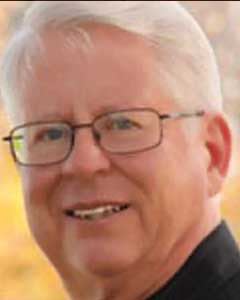Recently I reflected on darkness and light-a major Advent theme-while my wife and I, like many Canadians, were engaged in our annual yuletide home decoration. The winter equinox approaches when daylight is shortest and darkness is greatest.
The human desire for light to overcome darkness is universal. We Christians have much evidence of this in our sacred scriptures. In the Hebrew Bible (Genesis 1:15) we read, “In the beginning God created heaven and earth. Now the earth was a formless void, there was darkness over the deep…God said, ‘Let there be light,’ and there was light. God saw that light was good, and God divided light from darkness. God called the light ‘day’ and darkness he called ‘night.’ ”
The New Testament (John 1: 4-5) says: “In the beginning was the Word [Jesus Christ]…and what came into being in him was life, life that was the light of humanity; light shines in darkness and the darkness could not overpower it.”
The writers of Genesis and John did not invent the theme of light overcoming darkness. Both tapped into a universal human longing for illumination from time immemorial.
Primal peoples were fixated on sunrises and sunsets. They created narratives about how humans could participate creatively in both natural phenomena.
Divali is an end-of-our-year festival of lights originating among Hindus in India and subsequently adapted by Sikhs, Jains and some Buddhists. The founding myths and rites celebrate the return of Lord Rama, wife Sita and brother Lakshmana from a long exile. Today, Divali is celebrated around the world, and diyas (small clay lamps) or coloured electric lights are used to recognize the triumph of good over evil, and of overcoming chaos with peace and order.
Hanukkah is another Western year-end Jewish holiday commemorating the rededication of the Second Temple in Jerusalem (the temple Jesus knew).
More than 2,000 years ago, Orthodox Jews believed their sacred centre had been compromised by evil foreign powers. To this day, faithful Jews celebrate this event as a Festival of Lights and the Feast of Dedication. In Jewish homes, the lights of a unique eight-branched menorah are lit one night at a time, and then a distinct ninth-branch, a shamash (service candle) is added, with variations in differing Jewish settings. Hanukkah has more recently been popularized in North America because it falls close to the Christian Christmas.
Hundreds of community holiday light projects have surfaced across our country- usually featuring a blend of religious and secular imagery-but having in common the often undeclared theme of fighting off our cold, dark Canadian winter nights with light, warmth and human well-being.
Currently, many people seem to have little awareness of the deep spiritual and religious antecedents from which these popular practices have emerged. But the Hebrew prophet Isaiah had words that remain as relevant as when first uttered: “The people that walked in darkness have seen a great light; on the inhabitants of a country in shadow dark as death light has blazed forth” (9:1-2).
Writer’s note: Quotes are from the New Jerusalem Bible.





